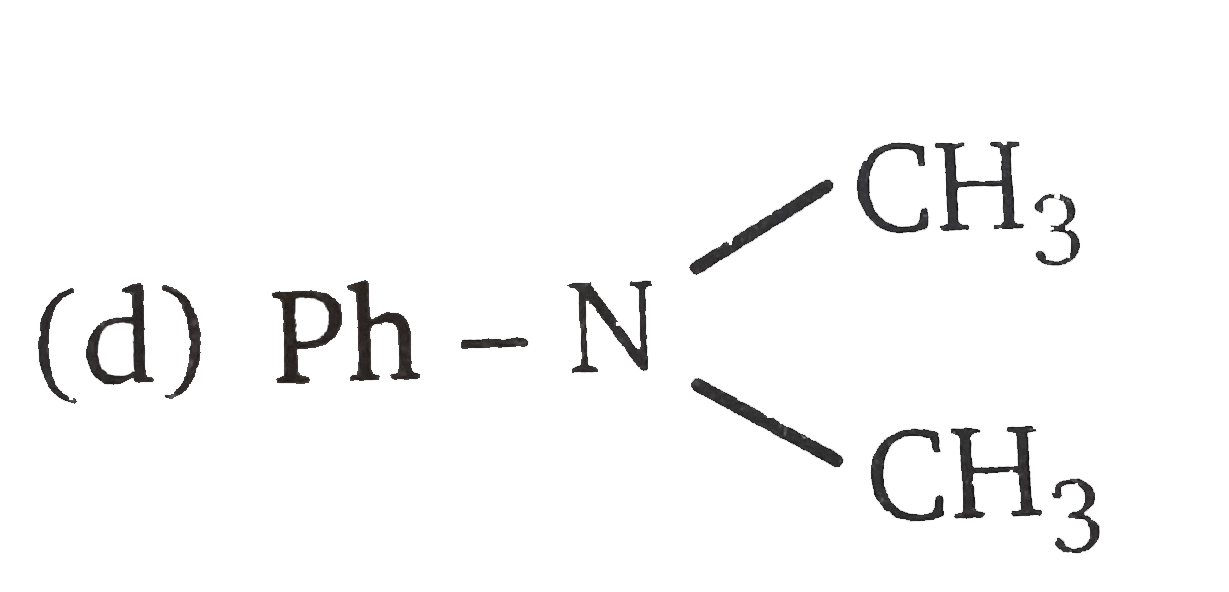Hoffmann bromamide reaction involves conversion of a carboxylic acid amide into an amine with a loss of a carbon atom on treatment with aqueous sodium hypobromite. Thus Hoffmann result in shortening of a carbon chain.
R=O∣∣C−NH2Br2−−−→NaOHR−NH2+NaBr+Na2CO3
Mechanism of the reaction is :

Which of the following will not give Hoffmann bromamide reaction.
CH3−O∣∣C−NH2



The correct Answer is:D
2∘ amide do not give Hoffmann.
Topper's Solved these Questions
- CARBENE AND NITRENEBOOK - MS CHOUHANCHAPTER - CARBENE AND NITRENEEXERCISE - Level 1 (Q.31 To Q.41)
11 Videos
- CARBENE AND CARBENOIDSBOOK - MS CHOUHANCHAPTER - CARBENE AND CARBENOIDSEXERCISE - ADDITIONAL OBJECTIVE QUESTIONS (Single Correct Choice Type)
26 Videos
- CARBOHYDRATES BOOK - MS CHOUHANCHAPTER - CARBOHYDRATES EXERCISE - MULTIPLE CORRECT CHOICE TYPE (INTEGER TYPE)
1 Videos
Similar Questions
It involves conversion of a carboxylic acid amide into an amine with a loss of a carbon atom on treatment with aqueous sodium hypobromite. THus Hoffmann result in shortening of a carbon chain.
R−O||C−NH2Br2−−−−−→NaOHR−NH2+NaBr+Na2CO3
Mechanism of the reaction is

Which of the following will not give Hoffmann bromamide rection ?
View SolutionIt involves conversion of a carboxylic acid amide into an amine with a loss of a carbon atom on treatment with aqueous sodium hypobromite. THus Hoffmann result in shortening of a carbon chain.
R−O||C−NH2Br2−−−−−→NaOHR−NH2+NaBr+Na2CO3
Mechanism of the reaction is


(Major) Product (A)
View Solution
Knowledge Check
Hoffmann bromamide reaction involves conversion of a carboxylic acid amide into an amine with a loss of a carbon atom on treatment with aqueous sodium hypobromite. Thus Hoffmann result in shortening of a carbon chain.
R−O∣∣C−NH2Br2−−−→NaOHR−NH2+NaBr+Na2CO3
Mechanism of the reaction is :

Which of the following will not give Hoffmann bromamide reaction.ACH3−O∣∣C−NH2B C
C D
D
Hoffmann bromamide reaction involves conversion of a carboxylic acid amide into an amine with a loss of a carbon atom on treatment with aqueous sodium hypobromite. Thus Hoffmann result in shortening of a carbon chain.
R=O∣∣C−NH2Br2−−−→NaOHR−NH2+NaBr+Na2CO3
Mechanism of the reaction is :

 Product (A) :APh−NH2BPh−CH2−NH2CPh−NH−CH2D
Product (A) :APh−NH2BPh−CH2−NH2CPh−NH−CH2D
Hoffmann bromamide reaction involves conversion of a carboxylic acid amide into an amine with a loss of a carbon atom on treatment with aqueous sodium hypobromite. Thus Hoffmann result in shortening of a carbon chain.
R−O∣∣C−NH2Br2−−−→NaOHR−NH2+NaBr+Na2CO3
Mechanism of the reaction is :

 Product (A) : APh−NH2BPh−CH2−NH2CPh−NH−CH3D
Product (A) : APh−NH2BPh−CH2−NH2CPh−NH−CH3D
Hoffmann bromamide reaction involves conversion of a carboxylic acid amide into an amine with a loss of a carbon atom on treatment with aqueous sodium hypobromite. Thus Hoffmann result in shortening of a carbon chain.
R−O∣∣C−NH2Br2−−−→NaOHR−NH2+NaBr+Na2CO3
Mechanism of the reaction is :

 Product (A) is :
Product (A) is :
View SolutionHoffmann bromamide reaction involves conversion of a carboxylic acid amide into an amine with a loss of a carbon atom on treatment with aqueous sodium hypobromite. Thus Hoffmann result in shortening of a carbon chain.
R=O∣∣C−NH2Br2−−−→NaOHR−NH2+NaBr+Na2CO3
Mechanism of the reaction is :

Number of moles of NaOh consumed in above reaction.
View SolutionHoffmann bromamide reaction involves conversion of a carboxylic acid amide into an amine with a loss of a carbon atom on treatment with aqueous sodium hypobromite. Thus Hoffmann result in shortening of a carbon chain.
R−O∣∣C−NH2Br2−−−→NaOHR−NH2+NaBr+Na2CO3
Mechanism of the reaction is :

Number of moles of NaOH consumed in above reaction.
View SolutionThe conversion of an amide by action of NaOH and Br2 to primary amine that has one carbon
less than the starting amide is known as Hofmann-Bromamide reaction.
R−O∣∣C−NH2Br2+NaOH−−−−−−−→orNaOBrR−NH2+NaBr+Na2Co3

 , Find out X :
, Find out X :
View SolutionR−O∣∣C−NH2+xNaOH+Br2→R−NH2+2NaBr+Na2CO3+H2O
Number of moles of NaOH used in above Hoffmann bromamide reaction is :
View Solution
